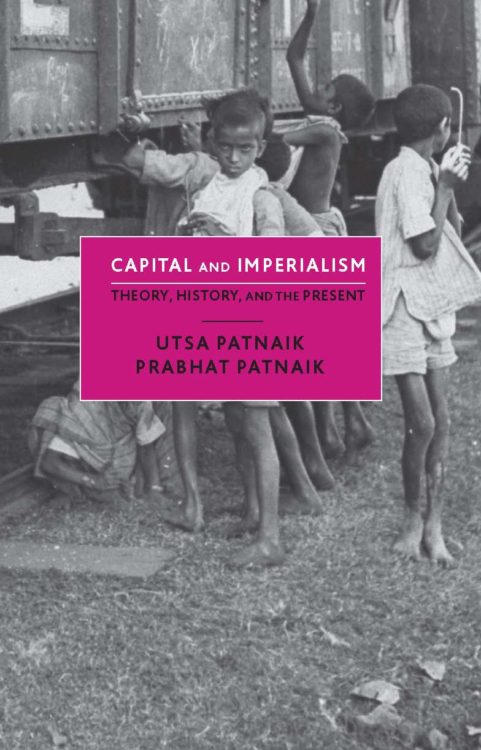Capital and imperialism:
Theory, history, and the present
By Utsa Patnaik and Prabhat Patnaik
424 pages, $27 paper, 978-1-58367-891-6
Reviewed by Asha Herten-Crabb
for International Affairs
In its near 300-year excursion through the history of the global economy, Capital and Imperialism makes two clear arguments: the classical theoretical basis underlying the justification of capitalism as a stable economic system is awed, and inter- national financial capitalism, as the current and final stage of capitalism, stands at an impasse. Economists Utsa Patnaik and Prabhat Patnaik present a thorough and expansive critical account of the history of the development of capitalism to understand its ‘real nature’. This account follows from their 2016 book The theory of imperialism (New York: Columbia University Press, 2016), and Utsa’s 2017 papers quantifying the British colonial extraction from the Indian state to the tune of $45 trillion in today’s money, and the role of British Second World War military financing in the Bengal famine. An expanded analysis of the latter two papers is included in this new book.
The mainstay of the authors’ argument is their critique of classical economic theory that depicts capitalism as a self-contained system, established between capitalists and workers alone, and ultimately leading to sustained high growth and high employment. Instead, Patnaik and Patnaik unpick the realities of capitalism: First, as thriving on exogenous rather than endogenous stimuli––namely colonialism followed by state intervention after the Second World War––thus negating its capacity to be self-contained and perpetual; and second, leading to high unemployment through deindustrialization and land grabs for export crops and property accumulation which push petty producers and peasants into joblessness.
Together, these critiques stir up questions on the present-day state of things and where we go from here. With the exhaustion of direct colonial extraction and the contemporary resistance to state intervention outside crises, the capitalist system is missing the exogenous stimuli needed to grow and as such is now at an ‘impasse’. Economic growth is instead fomented through the accumulation of debt in unsustainable bubbles. These bubbles, as in the dot com and housing crises of the last two decades, inevitably lead to a cycle of boom and bust. In addition to these destructive cycles, the Patnaiks argue that the hegemony of international finance capital––as the final stage in the development of capitalism––is implicated in both a weakening of democratic choice, specifically where choices do not preference capital, and the rise of neo-fascist populist movements.
…Patnaik and Patnaik provide two potential solutions: state-based delinking from the global economy through capital controls to prevent the outflow of surplus profit; and the creation of a global fund to provide the fiscal stimulus required to maintain a basic minimum living standard and overcome the hegemony of international financial capital. The former would reinstate national sovereignty, though they stress the need for inclusive, rather than fascist, nationalism. The latter would do for the world what European states were able to do for their citizens through state intervention after the Second World War.
Both options have substantial obstacles, not least because, as the authors lament, there is a lack of anti-capitalist alternatives arising from a consolidated political left. It remains to be seen whether the alternatives articulated by the authors and resonance with their intended audience, but their book is essential reading for understanding how we came to have the global economic system we do.
Read the full review by going to International Affairs


Comments are closed.